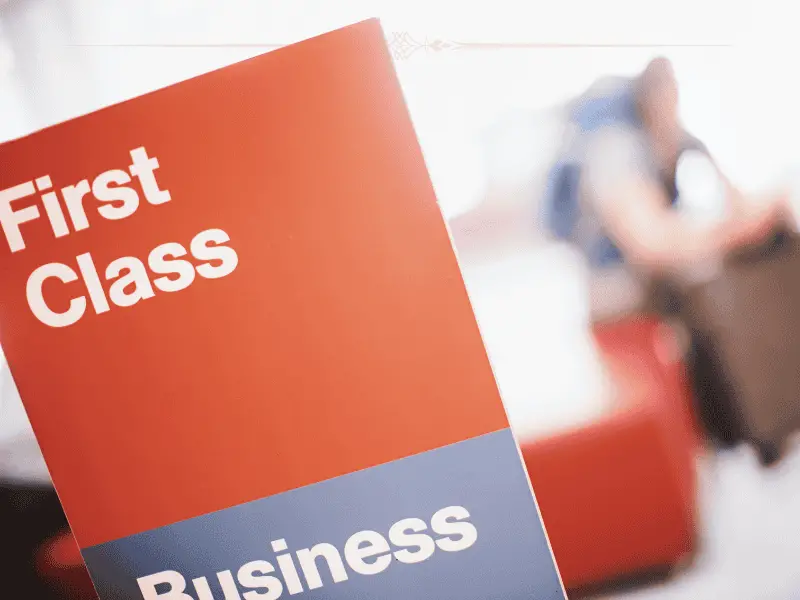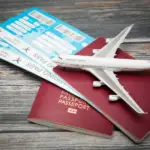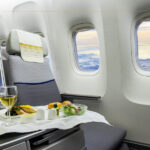The dream of stretching out in a spacious business class seat while sipping champagne at 35,000 feet no longer requires a corporate expense account or lottery winnings. A quiet revolution is taking place in the aviation industry, where resourceful passengers are discovering legitimate methods to access premium cabin experiences at economy ticket prices.
This transformation isn’t about fraudulent schemes or airline manipulation. Instead, it represents a fundamental shift in how airlines price and allocate their premium inventory, creating unprecedented opportunities for travelers willing to think strategically about their booking approach.

The Rise of the Budget Upgrade
Understanding why these opportunities exist requires examining the complex psychology of airline revenue management. Airlines operate on razor-thin margins, with every empty premium seat representing lost revenue that can never be recovered once the aircraft door closes.
Premium cabins on many flights depart with significant empty space. Business travelers, who traditionally filled these seats, have increasingly embraced remote work or reduced travel budgets. This creates a supply-demand imbalance that airlines are desperately trying to correct through innovative pricing strategies.
The traditional model of rigid class structures is crumbling. Airlines now recognize that attracting additional revenue from economy passengers through partial upgrades generates more profit than flying with empty premium seats. This realization has opened doors that were previously sealed shut for budget-conscious travelers.
How the Upgrade Game Works
Smartphone applications have revolutionized how airlines communicate with passengers after booking. Many carriers now send targeted upgrade offers directly to passengers’ phones, creating opportunities that didn’t exist in the pre-digital era.
These notifications often arrive between 24 hours and one week before departure, when airlines have a clearer picture of their premium cabin occupancy. The timing is strategic – airlines want to maximize revenue from passengers who are already committed to traveling but might be willing to spend additional money for enhanced comfort.
The key to capitalizing on these opportunities lies in maintaining flexibility and responding quickly. Airlines typically limit the time window for accepting these offers, sometimes requiring decisions within hours of receiving the notification.
Travel industry data suggests that acceptance rates for these mobile upgrade offers are significantly higher than traditional upgrade methods, partly because passengers perceive them as exclusive, personalized deals rather than standard commercial offers.
Strategic Timing and Route Selection
Not all destinations offer equal upgrade opportunities. Leisure routes, particularly those serving vacation destinations, present the most favorable conditions for securing premium seats at discounted rates. Business-heavy routes like London to Frankfurt or New York to Chicago see consistently high premium cabin demand, making upgrade opportunities scarce.
Weekend flights and holiday periods create unique dynamics. While holiday travel might seem like premium upgrade opportunities would be limited, the reality is more complex. Business travelers tend to avoid these periods, creating pockets of availability that airlines are eager to fill.
Seasonal variations play a crucial role in upgrade availability. Summer routes to Mediterranean destinations or winter flights to ski resorts often have premium cabin space available because leisure travelers traditionally book economy tickets and business travelers avoid these destinations during peak seasons.
International long-haul routes present the most compelling upgrade opportunities. The significant comfort difference between economy and business class on eight-hour flights makes the upgrade value proposition more attractive to passengers, while airlines have more flexibility in their pricing strategies for these routes.
The Bidding Game
Several major airlines have introduced bidding systems that allow passengers to name their price for premium cabin access. This approach transforms the upgrade process from a binary accept-or-reject decision into a negotiation where passengers have control over their spending.
The bidding process typically begins 72 hours before departure and continues until 24 hours before the flight. Passengers submit their maximum willingness to pay for an upgrade, and the airline’s algorithm determines successful bidders based on available space and bid amounts.
Success in these bidding systems requires understanding market psychology rather than simply offering the highest amount. Research indicates that bids positioned at 25-35% above the minimum suggested amount often succeed, while maximum bids frequently represent poor value for money.
Airlines benefit from this system because it generates additional revenue from seats that might otherwise remain empty, while passengers benefit from accessing premium cabin features at prices they control. The transparency of the bidding process eliminates the frustration traditionally associated with upgrade decisions.
The Strategic Approach
Success requires a strategic approach. Travelers must:
- Monitor airline communications vigilantly
- Act quickly when upgrade opportunities emerge
- Understand specific carrier policies
- Identify routes with the most favorable upgrade potential
An alternative approach involves purchasing additional economy seats to create business class-like space without the premium cabin price. This strategy works particularly well on aircraft where economy rows contain three or four seats, allowing passengers to secure entire rows for a fraction of business class costs.
Airlines facilitate this approach through neighbor-free seat selection options, which allow passengers to block adjacent seats for a fee. While this doesn’t provide business class meal service or lounge access, it creates the physical space that many passengers value most about premium cabin travel.
The mathematics often favor this approach on shorter flights where business class premiums can exceed £500, while securing additional economy space might cost £100-200. For passengers primarily concerned with comfort rather than service, this represents exceptional value.
Some carriers have formalized this approach by offering premium economy products that essentially bundle additional space with economy service levels. These hybrid offerings provide much of the comfort benefit of business class at prices closer to economy fares.
Timing and Communication Strategies
Success in securing premium cabin access at economy prices requires mastering the timing of airline communications. Most airlines send upgrade offers based on sophisticated algorithms that consider passenger booking history, route profitability, and current demand patterns.
Passengers can influence their position in these algorithms by engaging with airline marketing communications, maintaining updated contact information, and demonstrating flexibility in their travel plans. Airlines prioritize upgrade offers to passengers they perceive as likely to accept and potentially become repeat premium customers.
The most successful travelers monitor airline communications across multiple channels including email, mobile apps, and social media. Airlines sometimes distribute different upgrade offers through different channels, creating multiple opportunities for the same flight.
Booking timing also influences upgrade opportunities. Passengers who book economy tickets well in advance often receive more upgrade offers than those booking close to departure, as airlines have more time to evaluate and optimize their revenue strategies.
Carrier-Specific Strategies
Different airlines approach upgrade opportunities with varying philosophies and systems. European carriers like Lufthansa and Virgin Atlantic have embraced technology-driven upgrade platforms that provide passengers with real-time bidding opportunities and transparent pricing.
Middle Eastern carriers such as Etihad have focused on creating premium economy products that bridge the gap between economy and business class, offering significant comfort improvements at moderate price premiums.
North American carriers like Air Canada have developed sophisticated loyalty program integration that provides upgrade opportunities based on passenger history and status, even for passengers without elite status credentials.
Understanding these carrier-specific approaches allows travelers to select airlines that align with their upgrade strategies. Some passengers plan their routing specifically around carriers known for generous upgrade policies rather than choosing based purely on schedule or price.
Value Assessment
The financial calculation for upgrade opportunities extends beyond the immediate price difference. Business travelers often justify upgrade costs by considering productivity gains from better rest and arrival condition. Leisure travelers might evaluate upgrades based on the enhancement to their overall vacation experience.
Long-haul flights present the most compelling value propositions for upgrades. The comfort difference between economy and business class becomes more significant as flight duration increases, making upgrade premiums more justifiable on eight-hour flights than two-hour domestic routes.
Hidden costs associated with premium cabin access, such as increased airport lounge spending or higher meal expectations, should factor into upgrade decisions. Some passengers find that premium cabin access creates additional spending pressure that diminishes the overall value proposition.
Frequent travelers often view upgrade spending as an investment in their travel comfort and productivity. The cumulative effect of improved travel experiences can justify higher annual travel budgets for passengers who travel regularly for business or leisure.
Technology Integration
Artificial intelligence is transforming how airlines price and offer upgrades. Modern revenue management systems can predict individual passenger upgrade likelihood with remarkable accuracy, enabling personalized pricing strategies that maximize both airline revenue and passenger satisfaction.
Machine learning algorithms analyze passenger behavior patterns, booking histories, and market conditions to optimize upgrade offers in real-time. This technology enables airlines to present upgrade opportunities at precisely the right moment and price point for individual passengers.
Integration between airline systems and passenger mobile devices creates seamless upgrade experiences. Passengers can receive notifications, evaluate options, and complete upgrade purchases without leaving their current location or interrupting their daily activities.
The evolution toward dynamic pricing models means that upgrade opportunities will become increasingly personalized and time-sensitive. Passengers who understand and adapt to these technological trends will have significant advantages in securing premium cabin access at attractive prices.
The Practical Application
Implementing these strategies requires preparation and patience. Successful travelers typically research their chosen airline’s upgrade policies before booking, understand the aircraft configuration for their specific route, and maintain flexibility in their willingness to spend additional money for enhanced comfort.
Documentation and record-keeping help travelers understand which strategies work best for their travel patterns. Tracking upgrade offer frequency, pricing, and success rates enables continuous improvement in upgrade acquisition strategies.
The most effective approach often combines multiple strategies rather than relying on a single method. Passengers might bid on official upgrades while simultaneously exploring additional seat purchases and monitoring last-minute offers through mobile applications.
This multi-faceted approach maximizes opportunities while providing backup options if primary strategies don’t succeed. The investment in understanding airline systems and upgrade mechanisms typically pays dividends through improved travel experiences at controlled costs.
Budget-conscious passengers no longer need to accept cramped economy conditions as inevitable. Through strategic thinking, proper timing, and understanding of airline operations, comfortable premium cabin travel has become accessible to a much broader range of travelers than ever before.




